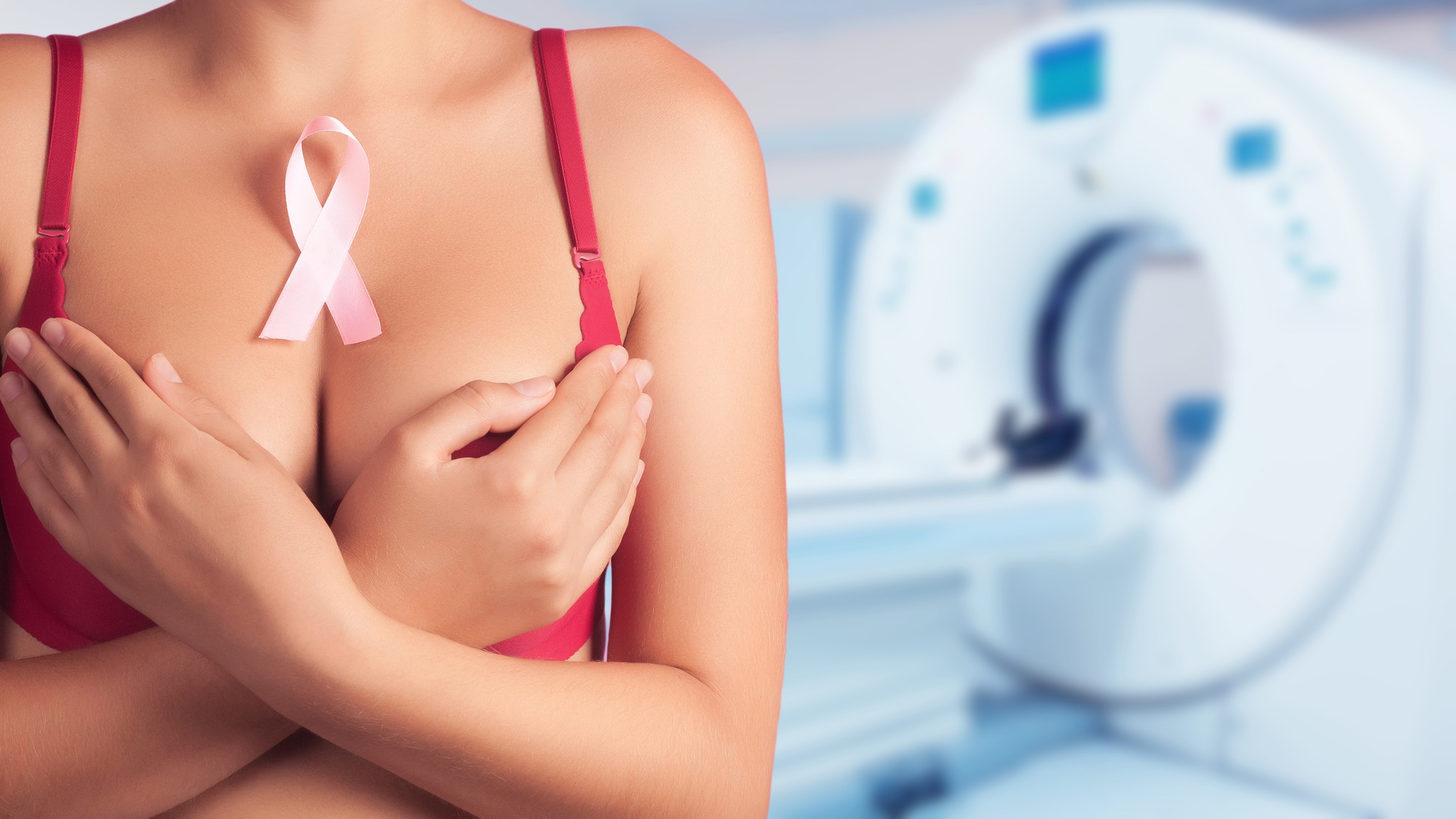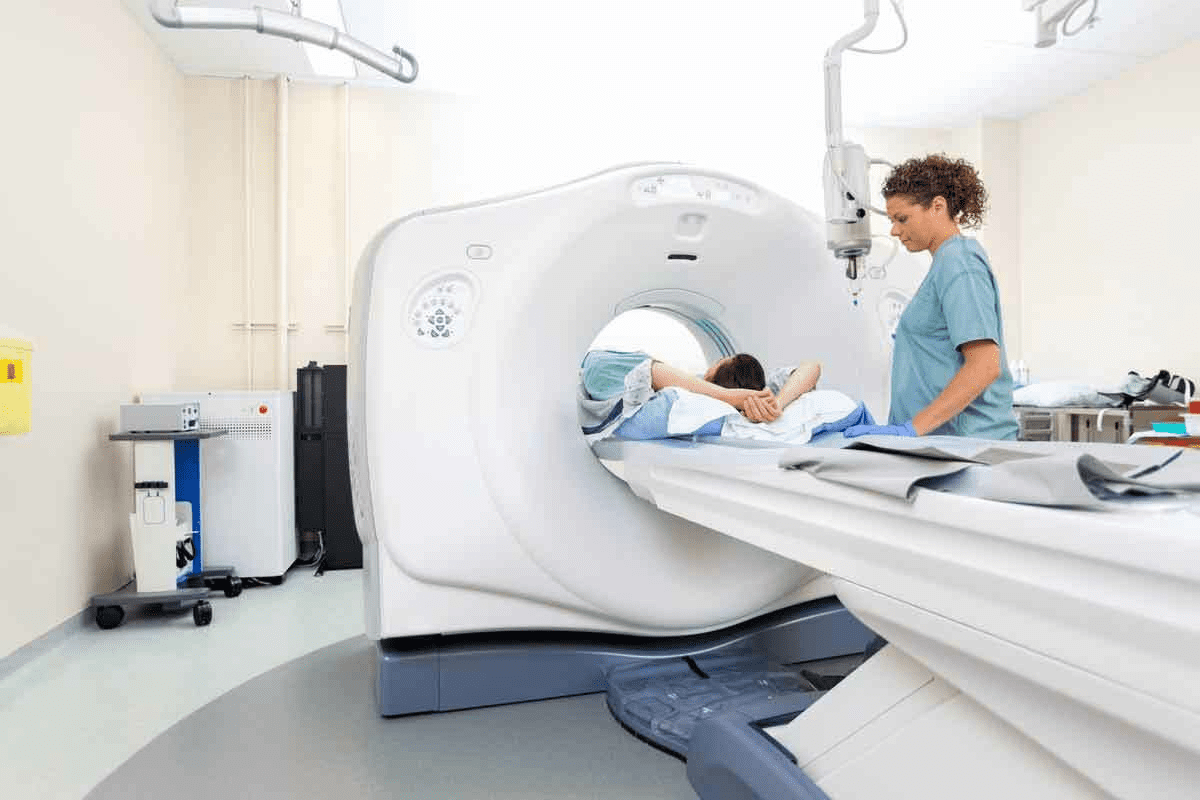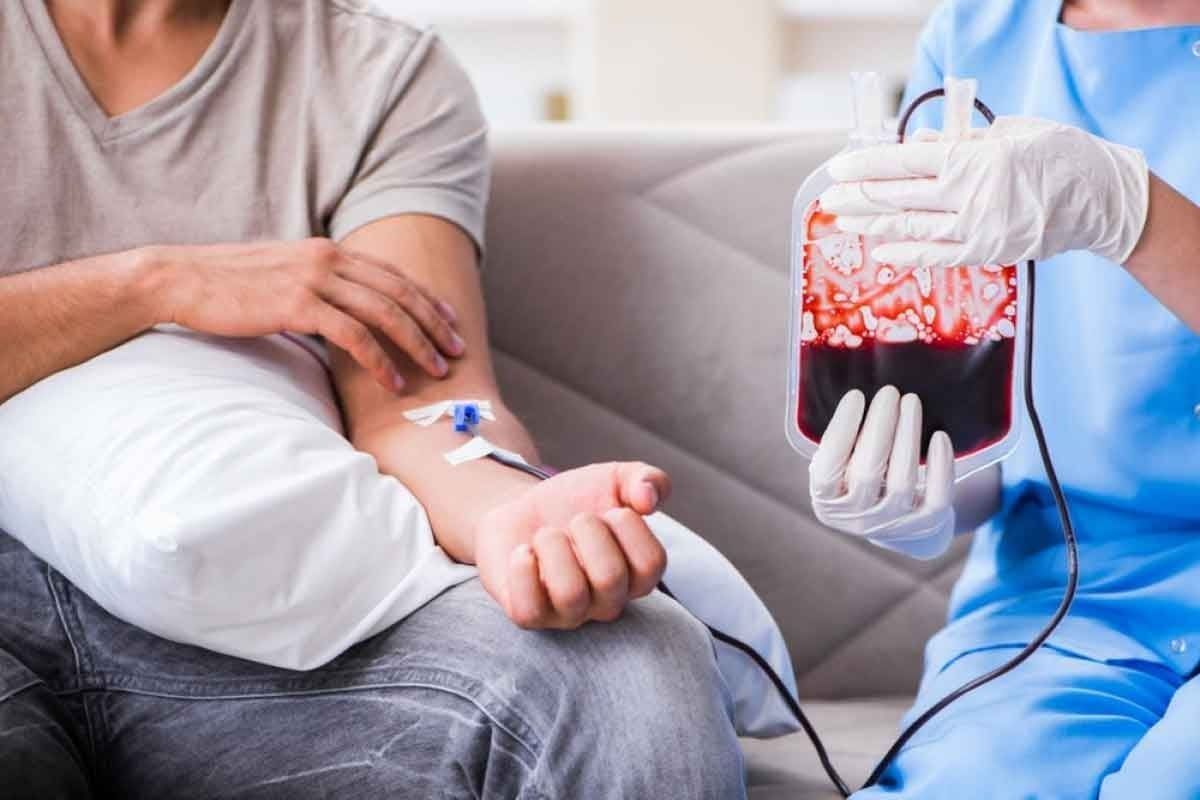Last Updated on November 27, 2025 by Bilal Hasdemir

It’s important to know what is a breast tumor to spot signs early. A breast tumor is an unusual mass or lump in the breast tissue. It can be either harmless or dangerous.
Malignant breast tumors are a big health worry. They cause about 2.3 million new cases worldwide every year. At Liv Hospital, we help you understand breast tumor definition and the difference between harmless and dangerous tumors. This knowledge helps you make smart choices about your health.
Key Takeaways
- Understanding the definition of a breast tumor is essential for early detection.
- Breast tumors can be either benign or malignant.
- Malignant breast tumors are a significant global health concern.
- Liv Hospital provides patient-centered care and expertise in breast health.
- Recognizing the signs of a malignant tumor can lead to timely medical intervention.
What Is a Breast Tumor?
A breast tumor is an abnormal growth of cells in the breast tissue. It’s important to know about breast tumors to spot signs and symptoms early. Most breast lumps are not serious, but some can be dangerous.
It’s key to tell the difference between harmless and harmful tumors.
Breast Tumor Definition and Formation
Breast tumors form when cells grow in an odd way, creating a mass. This can happen in different parts of the breast, like ducts, lobules, or connective tissue. The reasons for this growth are complex, involving genes, hormones, and the environment.
Doctors stress that “Early detection is key to effective treatment.”
Key factors contributing to breast tumor formation include:
- Genetic mutations
- Hormonal influences
- Environmental factors
Common Locations in Breast Tissue
Breast tumors can occur in various spots, like the ducts and lobules. The ducts carry milk to the nipple, and the lobules make milk. Tumors in these areas can be either harmless or dangerous.
Knowing where and what types of breast tumors are is critical. In the next part, we’ll look at the differences between harmless and dangerous tumors.
Benign vs. Malignant Breast Tumors
Knowing the difference between benign and malignant breast tumors is key to breast health. It helps doctors decide the best treatment and care for patients.
Characteristics of Benign Tumors
Benign breast tumors are not cancerous. They don’t spread or invade other tissues. They are usually:
- Encapsulated and well-defined
- Mobile and not fixed to surrounding tissues
- Not usually painful, though some may cause discomfort
- Often treated with monitoring or surgical removal if they cause symptoms
Examples of benign breast tumors include fibroadenomas and cysts. Monitoring and proper diagnosis are key to managing benign tumors effectively.
Characteristics of Malignant Tumors
Malignant breast tumors are cancerous. They can spread and invade other organs. They are known for:
- Irregular shapes and poorly defined borders
- Potential fixation to surrounding tissues or skin
- Possible skin changes such as dimpling or redness
- May cause pain, though many are painless in the early stages
Early detection and treatment of malignant breast tumors are critical for improving survival rates. Malignant tumors need a detailed treatment plan. This may include surgery, chemotherapy, and radiation therapy.
Types of Breast Tumors
It’s important to know about the different types of breast tumors. They can start in ducts, lobules, or connective tissue. Knowing where they come from helps doctors figure out what they are and how to treat them.
Ductal Carcinomas
Ductal carcinomas are the most common breast cancer. They start in the milk ducts. They can either stay in the ducts or spread to other parts of the breast.
- Ductal Carcinoma In Situ (DCIS): This is when cancer cells stay in the ducts but haven’t spread.
- Invasive Ductal Carcinoma (IDC): This is when cancer cells break out of the ducts and grow in the breast tissue.
Lobular Carcinomas
Lobular carcinomas start in the lobules of the breast. Like ductal carcinomas, they can be invasive or non-invasive.
- Lobular Carcinoma In Situ (LCIS): This is a sign that you might be at higher risk for breast cancer, but it’s not cancer itself.
- Invasive Lobular Carcinoma (ILC): This is when cancer cells spread from the lobules into the rest of the breast tissue.
Other Types of Breast Tumors
There are other types of breast tumors that are less common.
| Type | Description |
|---|---|
| Medullary Carcinoma | This is a rare type of breast cancer with a clear boundary between the tumor and normal tissue. |
| Tubular Carcinoma | This is a small, slow-growing tumor with a good outlook. |
| Mucinous Carcinoma | This type of cancer makes a lot of mucin, giving it a special look. |
Each type of breast tumor has its own traits and treatment needs. Getting the right diagnosis is key to choosing the right treatment.
We’ve talked about the main types of breast tumors, including ductal and lobular carcinomas, and some rarer ones. Knowing these differences is key to managing and treating them well.
Early Signs and Symptoms of Breast Tumors
Spotting breast tumor symptoms early is key to managing them well. Early breast cancer might show up as a lump. Knowing your breast’s changes can help a lot in treatment.
Breast tumors can show up in different ways. Experts say early detection is vital for good treatment and survival.
“The earlier breast cancer is detected, the better the chances for successful treatment,” says a leading oncologist.
Physical Changes to Look For
Keep an eye out for any odd changes in your breasts. These signs include:
- A new lump or thickening in the breast or underarm area
- Changes in the size or shape of the breast
- Dimpling or puckering of the skin
- Redness or scaliness of the skin
- Nipple discharge or changes in nipple position
When to Consult a Healthcare Provider
If you see any of these changes, see a doctor right away. Early consultation can lead to early diagnosis and treatment. Don’t wait to check your health if something seems off.
Not all breast tumors are cancer. Only a doctor can tell what it is. We stress the need for awareness and quick action. Your health is our priority.
Recognizing Malignant Breast Tumor Signs
Malignant breast tumors show different signs than benign ones. Knowing these signs is key for early detection and treatment.
Visual Indicators of Malignancy
Visual changes can signal malignancy. Look for size or shape changes in the breast, asymmetry, or skin changes like dimpling or thickening. A malignant tumor can make the skin look like an orange peel.
Texture and Mobility Differences
Malignant tumors feel different and move differently than benign ones. They are often hard or irregularly shaped and stick to the tissue around them. Benign tumors are smoother and move more easily.
Pain and Discomfort Patterns
Not all malignant tumors hurt, but some can cause discomfort or pressure. This pain can last and not always follow the menstrual cycle. Remember, pain alone doesn’t mean it’s cancer, but it’s a clue to look further.
Lymph Node Changes
Changes in lymph nodes, like in the armpit, can mean cancer. If lymph nodes get big or hard, it might mean cancer has spread. Checking these nodes is a big part of a breast exam.
Risk Factors for Developing Malignant Breast Tumors
The risk of getting malignant breast tumors comes from genes, hormones, and lifestyle. Knowing these factors helps in finding and stopping malignant breast tumors early.
Genetic and Family History Factors
Genes play a big part in getting malignant breast tumors. If you have a family history of breast cancer, you’re at higher risk. Certain genes like BRCA1 and BRCA2 raise your risk even more. For more on breast cancer risk by age, check this resource.
Hormonal and Reproductive Factors
Hormones also affect the risk of malignant breast tumors. Starting menstruation early, stopping it late, and using hormone therapy can raise your risk. Not having kids or having them later in life also increases your risk.
Lifestyle and Environmental Influences
Lifestyle and the environment also matter. Being overweight, not exercising, and being exposed to toxins can increase your risk. Drinking alcohol and smoking also raise your risk.
Knowing these risk factors helps you take steps to lower your risk. We stress the need for awareness and preventive actions against malignant breast tumors.
Diagnostic Procedures for Breast Tumors
Diagnosing breast tumors needs a mix of medical skills and modern technology. It’s key to know if a tumor is harmless or cancerous.
Clinical Breast Examination
A clinical breast exam is often the first step. A healthcare provider looks for any unusual lumps or texture changes. This helps spot problems that need more checking.
Imaging Technologies
Imaging tools are very important for finding breast tumors. The main ones are:
- Mammography: uses X-rays to find small tumors.
- Ultrasound: makes images with sound waves to see if a lump is solid or fluid.
- MRI (Magnetic Resonance Imaging): gives detailed pictures, great for dense breasts.
Biopsy Procedures and Analysis
If tests show a tumor, a biopsy is done. This takes a sample of tissue for closer look. There are different biopsies, like fine-needle aspiration and core needle biopsy. The sample is then checked for cancer cells.
Staging and Grading Systems
When a tumor is found to be cancer, its stage and grade are checked. Staging looks at the tumor size, if it’s in lymph nodes, and if it’s spread. Grading sees how much the cancer cells look like normal cells.
Knowing the stage and grade helps plan treatment. It helps doctors pick the best treatment and guess how the disease will go.
Treatment Options for Malignant Breast Tumors
Dealing with malignant breast tumors can be tough. But, there are many ways to treat them. The right treatment depends on the cancer’s stage and type. Each patient gets a plan that fits their needs.
Surgical Approaches
Surgery is a key treatment for these tumors. There are two main types: breast-conserving surgery and mastectomy. Breast-conserving surgery removes the tumor and some tissue around it. Mastectomy takes out the whole breast. The choice depends on the tumor’s size, location, and what the patient wants.
Radiation Therapy
Radiation therapy is used after surgery to kill any cancer cells left. It uses high-energy rays to target cancer. There are different types, like external beam radiation and brachytherapy.
Chemotherapy Protocols
Chemotherapy uses drugs to kill cancer cells. It’s often used for malignant breast tumors, even if the cancer has spread. Chemotherapy can be given before or after surgery to kill cancer cells.
Targeted and Hormonal Therapies
Targeted therapies aim at specific cancer cell traits, sparing healthy cells. For example, HER2-targeted therapy is for HER2-positive cancers. Hormonal therapy works for cancers that grow in response to hormones. It lowers hormone levels to slow cancer growth.
| Treatment Option | Description | Applicability |
|---|---|---|
| Surgery | Removing the tumor and surrounding tissue | Primary treatment for most malignant breast tumors |
| Radiation Therapy | Using high-energy rays to kill cancer cells | After surgery to reduce recurrence risk |
| Chemotherapy | Using drugs to kill cancer cells | Before or after surgery, depending on cancer stage |
| Targeted Therapy | Targeting specific cancer cell characteristics | For cancers with specific markers (e.g., HER2-positive) |
| Hormonal Therapy | Reducing hormone levels to slow cancer growth | For hormone receptor-positive breast cancers |
Every patient’s fight against malignant breast tumors is unique. Treatment plans are made just for them. Knowing about the different options helps patients make informed choices about their care.
Living with a Breast Tumor Diagnosis
Getting a breast tumor diagnosis can be scary. It affects your health, emotions, and mind. You need to be strong, hopeful, and have people to support you.
Emotional and Psychological Impact
A breast tumor diagnosis can make you feel many emotions. You might feel shocked, deny it, or be anxious and scared. It can change your life, how you connect with others, and your happiness.
It’s okay to feel overwhelmed. But with the right support, you can handle your feelings. Doctors, family, and support groups are key in helping you deal with your emotions.
Support Resources and Communities
Having a strong support system is important. This can include doctors, family, friends, and support groups. They offer emotional support, help with daily tasks, and make you feel connected.
We know how important it is to connect you with the right help. This way, you can better manage your diagnosis and feel better overall.
| Support Resource | Description | Benefits |
|---|---|---|
| Healthcare Providers | Medical professionals who provide diagnosis, treatment, and care. | Expert medical advice, treatment options, and ongoing care. |
| Family and Friends | Loved ones who offer emotional and practical support. | Emotional comfort, practical help, and a sense of connection. |
| Support Groups | Communities of individuals with similar experiences. | Shared understanding, emotional support, and coping strategies. |
By using these support options, you can handle your diagnosis better. You’ll find the strength and resilience to face what’s ahead.
Breast Tumor Prevention and Screening
Knowing how to prevent and screen for breast tumors is vital. Early detection is key to managing and treating them well.
Regular screenings and knowing your risk factors help a lot. We suggest self-exams, professional checks, and risk-reduction steps to keep your breasts healthy.
Breast Self-Examination Techniques
Doing regular self-exams helps you know what your breasts usually feel like. This makes it easier to spot any changes. Here’s how to do a self-exam:
- Stand in front of a mirror and look at your breasts.
- Lie down and feel your breasts with your finger pads in a circle.
- Look for any lumps, swelling, or changes in the nipple.
Do these checks every month, best a few days after your period.
Professional Screening Guidelines by Age
Professional screenings are key for breast health. The rules can change, but here’s a general guide:
- Women 40 to 44 can start annual screenings if they want.
- Women 45 to 54 should get a mammogram every year.
- Women 55 and older can go every two years or keep up with yearly screenings.
Talk to your doctor about your risk factors to find the right screening plan for you.
Risk-Reduction Strategies
Changing your lifestyle can lower your risk of breast tumors. Here are some tips:
- Eat well and stay active to keep a healthy weight.
- Drink less alcohol.
- Don’t smoke.
- Stay active.
Some studies also say breastfeeding might lower breast cancer risk. For more on breast health and research, check out breast cancer follow-up care resources.
Advances in Breast Tumor Research and Treatment
Recent breakthroughs in medical research have greatly improved our understanding and treatment of breast tumors. New ways to treat breast cancer are being discovered. This brings hope to patients all over the world.
Emerging Therapeutic Approaches
The treatment for breast tumors is changing. Immunotherapy is a big area of research. It uses the body’s immune system to fight cancer cells.
Targeted therapies are also being developed. They aim to attack cancer cells while protecting healthy tissue.
Precision medicine is another big step forward. Treatments are now tailored to the individual based on their tumor’s genetics. This has shown great promise in improving treatment results for patients with malignant breast tumors.
Personalized Medicine and Genetic Testing
Personalized medicine is changing how we treat breast tumors. By looking at a patient’s tumor genetics, we can find specific mutations that cause cancer. This lets us create treatment plans that are most likely to work for each patient.
Genetic testing is key in this process. It helps us find patients at higher risk of breast cancer. For example, BRCA1 and BRCA2 gene mutations raise the risk of breast cancer. Knowing this can help with prevention and treatment.
As research keeps moving forward, we’re seeing better and more personalized treatments for breast tumors. By using new therapies, personalized medicine, and genetic testing, we’re improving patient outcomes and quality of life.
Conclusion
Understanding breast tumors is key for early detection and treatment of breast cancer. Malignant tumors of the breast are a big health issue. This highlights the need for awareness and proper medical care.
Recent studies have found that a polygenic risk score, like PRS313, can predict invasive disease after DCIS or LCIS. For example, a study looked at 2,169 women with DCIS and 185 with LCIS. It found that PRS313 was linked to more disease on the other side. You can learn more about this study on Hospital Healthcare.
We’ve talked about different types of breast tumors, risk factors, how to diagnose them, and treatment options. It’s important to know the early signs and symptoms of breast tumors. This helps with timely medical care.
By staying informed and alert, people can take steps to protect their breast health. This can help lower the risk of getting a malignant tumor of the breast.
FAQ
What is a breast tumor?
A breast tumor is an abnormal growth in the breast tissue. It can be either benign (non-cancerous) or malignant (cancerous).
What is the difference between a benign and malignant breast tumor?
Benign tumors are non-cancerous and don’t spread. Malignant tumors are cancerous and can spread to other parts of the body.
What are the common types of breast tumors?
Common types include ductal and lobular carcinomas. There are also medullary and tubular carcinomas.
What are the early signs and symptoms of breast tumors?
Early signs include a new lump or thickening. You might also notice changes in breast size or shape. Nipple discharge or inversion and skin changes are other signs.
How are breast tumors diagnosed?
Diagnosis involves clinical exams and imaging like mammography and ultrasound. Biopsy and tissue analysis are also used.
What are the risk factors for developing malignant breast tumors?
Risk factors include genetic and family history. Hormonal and reproductive factors also play a role. Lifestyle and environmental factors like obesity and radiation exposure are important too.
What are the treatment options for malignant breast tumors?
Treatments include surgery like lumpectomy and mastectomy. Radiation and chemotherapy are also used. Targeted and hormonal therapies are options.
How can breast tumors be prevented or detected early?
Early detection is key. Regular self-exams and mammograms are important. Maintaining a healthy weight and staying active can also help.
What is the role of genetic testing in breast tumor diagnosis and treatment?
Genetic testing identifies genetic mutations that raise cancer risk. It helps guide treatment, including targeted therapies.
What are the emotional and psychological impacts of a breast tumor diagnosis?
A diagnosis can cause anxiety, depression, and fear. Support groups and communities are vital for coping.
What are the latest advances in breast tumor research and treatment?
Advances include immunotherapy, personalized medicine, and genetic testing. These are promising new approaches.
What is a malignant breast tumor?
A malignant breast tumor is a cancerous tumor. It can spread to other parts of the body.
What are the signs that may indicate a malignant breast tumor?
Signs include skin changes, texture and mobility differences, and pain patterns. Changes in lymph nodes are also important.
References
- National Breast Cancer Foundation. Breast tumors. https://www.nationalbreastcancer.org/breast-tumors/
- American Cancer Society. What is breast cancer? https://www.cancer.org/cancer/types/breast-cancer/about/what-is-breast-cancer.html
- National Center for Biotechnology Information (NCBI). PMC8428369. https://pmc.ncbi.nlm.nih.gov/articles/PMC8428369/
- Centers for Disease Control and Prevention (CDC). About breast cancer. https://www.cdc.gov/breast-cancer/about/index.html








